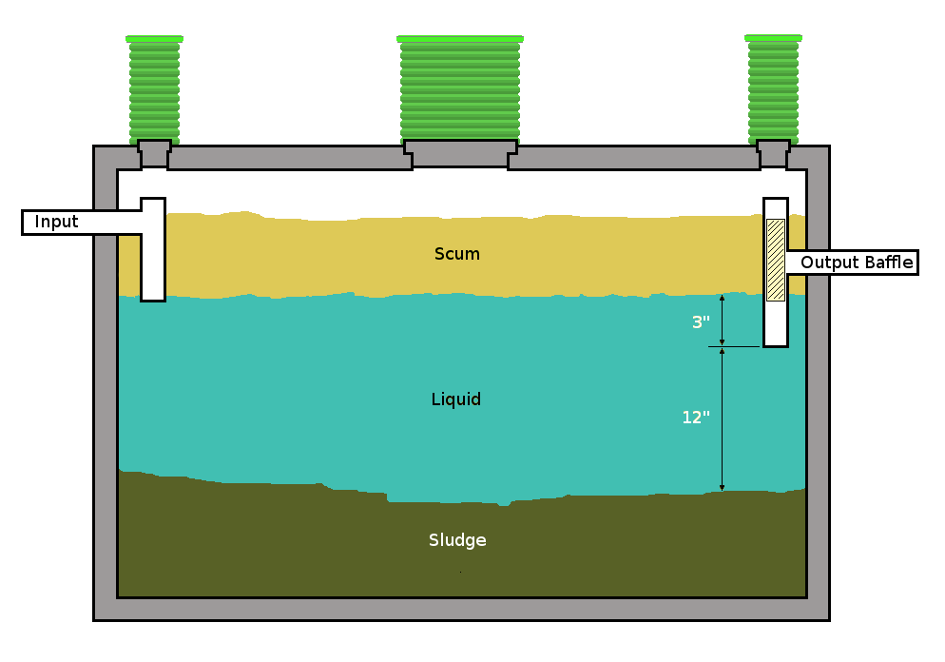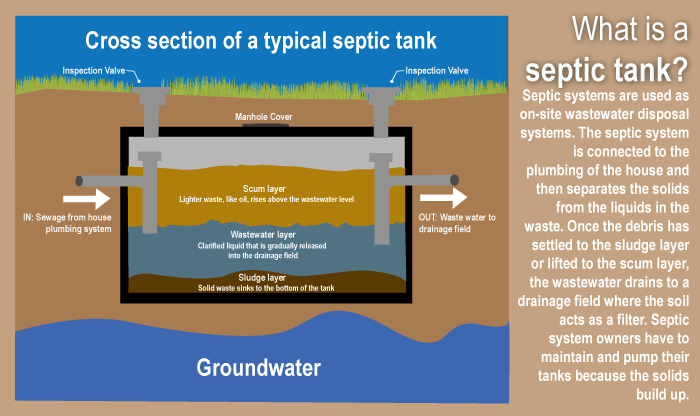Professional Septic Tank Pumping Near Me: Keeping Your System in Optimal Condition
Wiki Article
Translating the Language of Septic Container Solutions: A Reference of Terms for Clear Communication and Comprehending
In this post, we'll assist you decipher the language of septic tank solutions with a convenient reference of terms. From recognizing the essentials of your septic container to dealing with sludge build-up, we'll supply clear explanations to make certain clear communication and understanding.Sewage-disposal Tank: Comprehending the Basics

If you are unknown with sewage-disposal tanks, they are underground containers that deal with and hold wastewater from your home. These containers are a vital part of your home's pipes system, liable for securely and efficiently taking care of the waste generated by your daily tasks. Understanding the basics of septic storage tanks is important in order to ensure their proper functionality and stay clear of expensive fixings.
A septic container includes 2 primary elements: the container itself and the drainfield. The storage tank is where the wastewater flows right into, and it is developed to separate solids from fluids. The solids clear up at the end of the container, developing a layer of sludge, while the liquids, called effluent, surge to the top. The effluent then flows into the drainfield, where it is more dealt with and distributed right into the bordering dirt.
Regular maintenance of your sewage-disposal tank is necessary to stop problems such as obstructions, back-ups, and system failings. It is recommended to have your storage tank pumped every 3 to five years, relying on its size and usage. Additionally, it is essential to be mindful of what you flush down the drains pipes and toilets, as particular chemicals and materials can hurt the microbial equilibrium in the tank.
Drain Area: The Role of Soil in Garbage Disposal
To keep the correct performance of your septic container system, it is critical to understand the role of the drain field in garbage disposal and exactly how the surrounding soil plays an essential function in this process. The drainpipe field, likewise referred to as the leach area or absorption field, is an essential component of a septic system. Its main feature is to filter and deal with the wastewater that drains of the septic storage tank.As soon as the wastewater leaves the septic tank, it is dispersed equally across the drain area with a network of pipes or trenches. The drain area is composed of a layer of gravel or rock, which assists to distribute the wastewater evenly and promote effective filtering. Listed below the crushed rock layer, there is a layer of soil that functions as an all-natural filter.
The dirt in the drain area plays a critical role in the therapy of wastewater. As the wastewater percolates via the dirt, it goes through an all-natural procedure of purification and purification. The soil works as a biological and physical filter, eliminating dangerous germs, infections, and other impurities from the wastewater.
The structure and top quality of the soil are vital for the effective performance of the drainpipe area - septic tank pumping. The dirt should have excellent percolation rates to enable the wastewater to move with it easily. Furthermore, the soil must have enough oxygen degrees to sustain the development of aerobic germs, which help in the breakdown of natural issue in the wastewater

Effluent: the Fluid Waste From Your Septic System
As the wastewater leaves the drainpipe area, it is called effluent, and it is very important to comprehend the characteristics and administration of this fluid waste from your septic tank. Effluent is the term utilized to describe the cured wastewater that streams out of your sewage-disposal tank and into the drain area. septic tank pumping. This liquid waste includes a blend of water, organic issue, and liquified solidsEffluent should be totally free and clear of any type of undesirable smells. It might be an indicator of an issue with your septic system if you discover any kind of foul smells or discoloration. Routine upkeep and pumping of your sewage-disposal tank can assist guarantee that the effluent remains tidy and complimentary from pollutants.
Appropriate administration of effluent is important to avoid contamination of the surrounding environment. The drainpipe field is designed to filter and deal with the effluent before it enters the dirt. It is vital to prevent any tasks that might potentially damage the drain area, such as car parking vehicles or growing trees with deep origin systems.
Sludge: Taking Care Of Strong Waste Buildup
When dealing with strong waste accumulation in your septic tank, appropriate administration of sludge is essential. Sludge describes the thick layer of solid waste that builds up at the base of your septic container with time. Otherwise taken care of properly, sludge can cause different problems, such as clogging, back-ups, and even system failure.Routine upkeep is important to avoid sludge build-up. It is suggested to have your septic storage tank pumped every 3 to five years, depending on the size of your house and the tank's capacity. Pumping eliminates the gathered sludge, allowing your septic system to work successfully.
Along with normal pumping, there are a few steps you can require to decrease sludge buildup. First, bear in mind what you flush down the drainpipe. Stay clear of taking care of non-biodegradable items, such as paper towels, diapers, and sanitary items. These can add to sludge buildup. Second, consider using septic-safe products that won't interrupt the all-natural microbial equilibrium in your system.
Pumping: Preserving the Wellness of Your Septic Container
Keep the health and wellness of your septic tank by frequently pumping it. Over time, solid waste and sludge accumulate in the container, which can lead to clogs, backups, and also system failing.Routine pumping is recommended to avoid the sludge from getting to high degrees. The frequency of pumping depends on various aspects such as the dimension of the tank, the variety of passengers in your home, and the usage of water. Generally, septic containers ought to be pumped every 3 to 5 years. It's vital to note that every system is one-of-a-kind, and it's finest to seek advice from with an expert to determine the ideal pumping schedule Continue for your certain situation.
Final Thought
So there you have it: a handy glossary of terms to aid you better comprehend click here to find out more the language of sewage-disposal tank services. Whether it's finding out about the essentials of sewage-disposal tanks, understanding the role of the drain area, or recognizing exactly how to manage sludge accumulation, this reference will guarantee clear interaction and a far better understanding of your septic system. Keep these terms in mind to preserve the wellness and capability of your septic tank.A septic storage tank consists of 2 major parts: the tank itself and the drainfield.Regular maintenance of your septic tank is crucial to prevent issues such as blockages, backups, and system failings.To preserve the appropriate capability of your septic container system, it is crucial to understand the role of the drain field in waste disposal and how the surrounding soil plays a key role in this procedure. It is suggested to have your septic storage tank pumped every 3 to 5 years, depending on the size of your home and the storage tank's capability. Whether it's learning about the basics of septic tanks, understanding the duty of the drainpipe area, or recognizing exactly how to deal with sludge accumulation, this glossary will ensure clear interaction and a far better understanding of your septic system.
Report this wiki page